This is in a tyre storage depot at 32 Draman Caddesi (48.029557,28.943009). In 2014, when I asked at the entrance about the antik kilise, everyone seemed to be familiar with deranged foreigners wanting to see the old rubbish. You can see a little bit of the walls of the crypt cowering behind great towers of steel radials.
Boğdan Sarayı appears to have been part of the Monastery of John the Baptist in Petra. The ‘petra’ may refer to the outcrop of rock that was visible to the west of the building, perhaps the one atop which Kefevi Camii currently perches. It is oriented on a north-south rather than the usual east-west axis. This seems to indicate that it was not a major church. Müller-Weiner agrees with a swathe of experts in saying that this was probably a funerary chapel. Three tombs discovered in 1918 (Mamboury p220) support this view.
There is less of a consensus about the date of construction. The Monastery of Petra existed centuries before the building now called Boğdan Sarayı. Van Millingen (pp280-287) presents a mass of detail from travellers’ reports about the history of the monastery but, unusually, offers no opinion regarding the origin of this particular building. It shares features of late Byzantine building so presumably dates from the restoration of the empire to Constantinople after the Latin adventure petered out in 1261. There is evidence to support construction dates in the 12th (Mamboury) and 14th (Müller-Weiner) centuries. A likely explanation is that a restoration was carried out at the later date. Much of the bricks-and-mortar evidence existing in the early 20th century on which to base such conjecture has now disappeared.
The commonly accepted name of Boğdan Sarayı appears to stem from its status in Ottoman times as a chapel attached to the residence of the representatives of Moldavia, referred to by the Turks as ‘Boğdan’. This was established after Sultan Suleyman conquered the region in the early 16th century and envoys needed an appropriate residence from which to negotiate their erstwhile country’s fate with the Sublime Porte. The catastrophic fire of 1784 destroyed the residence and rendered the chapel unusable. Paspates visited in 1877 and reported seeing ikons, but that they were already being damaged by the locals. Since then it has crumbled away, often with human assistance.
Van Millingen (p280) and Mamboury (p220) present the same photograph showing Boğdan Sarayı with two storeys and its dome, standing alone in wide-open fields. This must have been taken before 1912. According to Freely (p224), the owner of the building in the early 20th century demolished the upper storey in order to sell the building material. It seems likely that some of this material went into this interesting chimney about 20m from the remains of the chapel.
A 1938 photograph by Nicholas Artamonoff shows the northern crypt of the chapel.
This photograph is probably from about 1983, when the Archaeological Museum did some work on the site.
Now all that remains is the northern end of the crypt. It was a substantial crypt, and maybe a little too much above ground to merit the name. It possessed a solid apse with some attractive brickwork which is still visible when not being used to store tyres. Until recently, piles of radials have obscured almost everything. However, a heavy snowfall in January 2017 caused the collapse of the flimsy roofing of the neighbouring sheds and Boğdan Sarayı was cleared. At present, the building is enjoying greater visibility than it has for decades.
The exterior of the apse can be viewed from Cepken Sokak. At the end of this street, at the point at which it intersects Sebze Bostanı Sokak, are the flattened remains of a Byzantine building. A column base is visible, but little structural detail can be discerned. Perhaps this was also part of the Monastery of St John the Baptist in Petra.
The extraordinary Church of the Holy Wisdom, tucked away in the wilds of Surrey, has a collection of Byzantine bits that includes these capitals claimed to be from Boğdan Sarayı.
Freely, John (1983) Blue Guide: Istanbul. London: Ernest Benn, New York: W.W. Norton
Mamboury, Ernest (1925) Constantinople: Tourists’ Guide, 1st edition. Rizzo and Son, Constantinople.
Matthews, Thomas (2001): The Byzantine Churches of Istanbul. Institute of Fine Arts, New York University. Available athttp://www.nyu.edu/gsas/dept/fineart/html/Byzantine/
Müller-Weiner, Wolfgang (1977) Bildlexikon zur Topographie Istanbuls (Deutsches Archäologisches Institut) Verlag Ernst Wasmuth Tübingen
Van Millingen, Alexander (1912): The Byzantine Churches of Istanbul. Available at http://www.gutenberg.org/files/29077/29077-h/29077-h.htm

Categories: Uncategorized | 1 Comment »
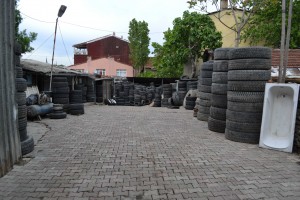
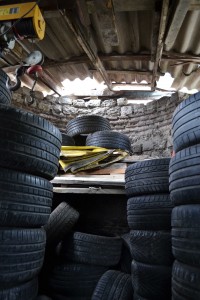
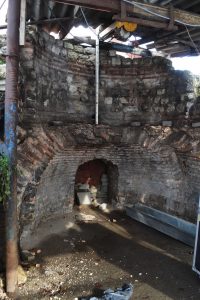
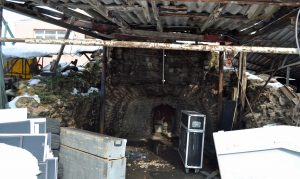
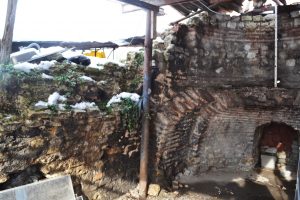
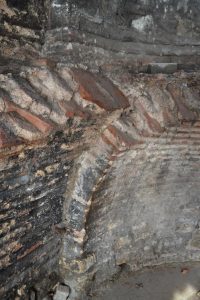
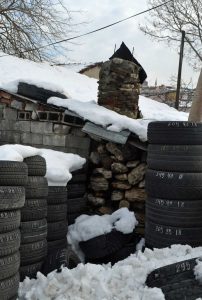
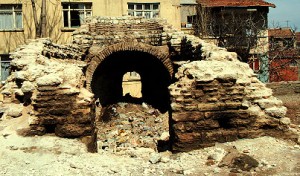
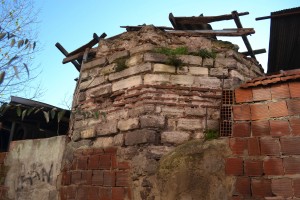
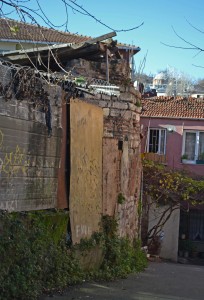

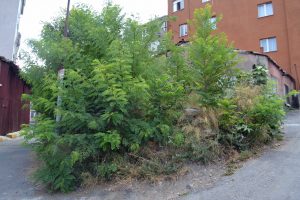
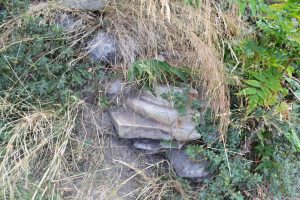
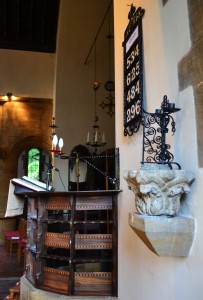
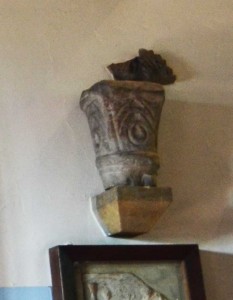

January 10th, 2020 at 10:03 pm
Is there any way to see the photos attached to the description of this building?
I find your article wonderful!
I will greatly appreciate every help!
Kind regards
Alex